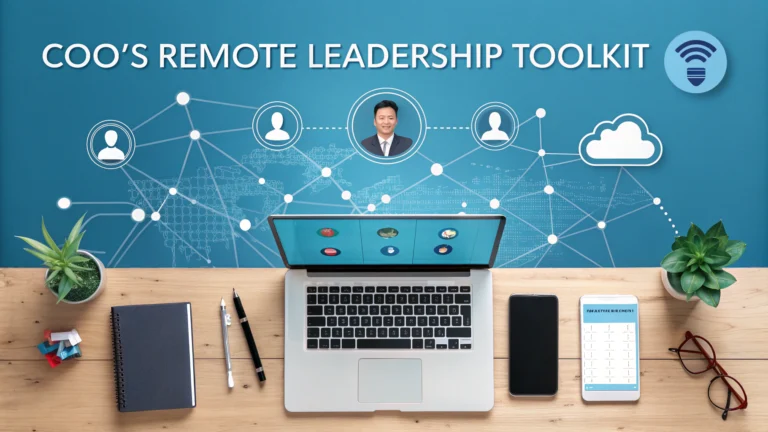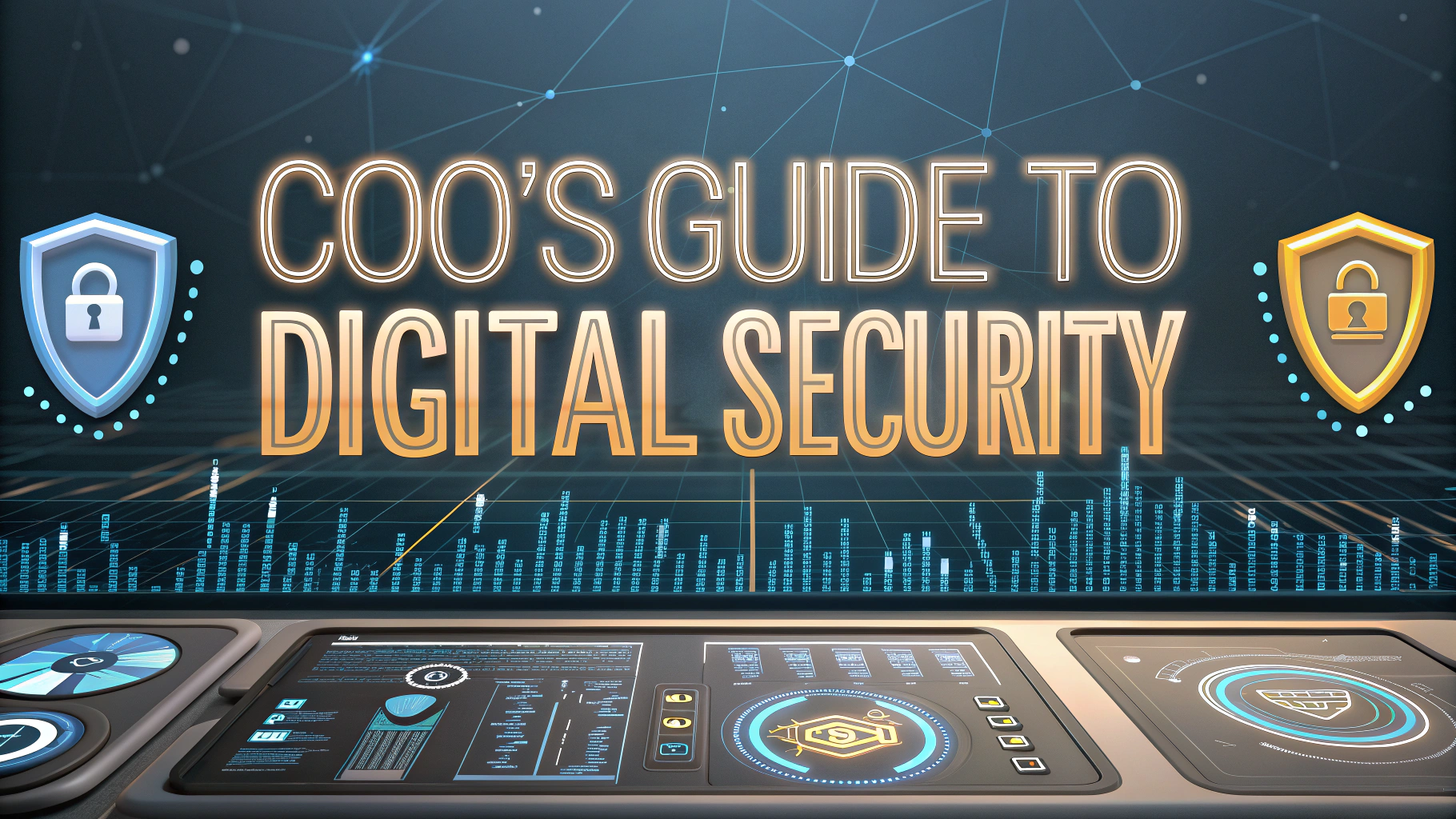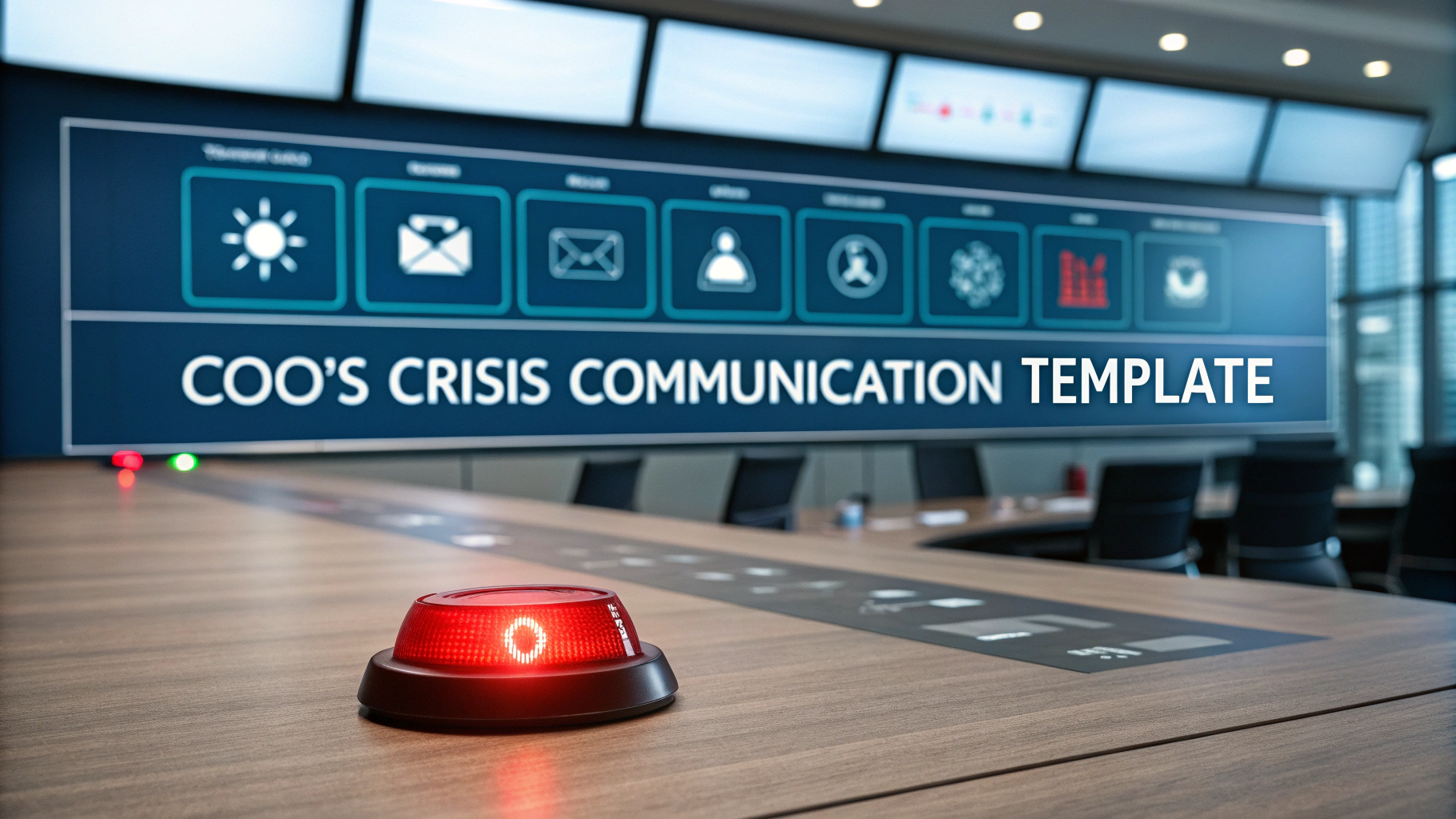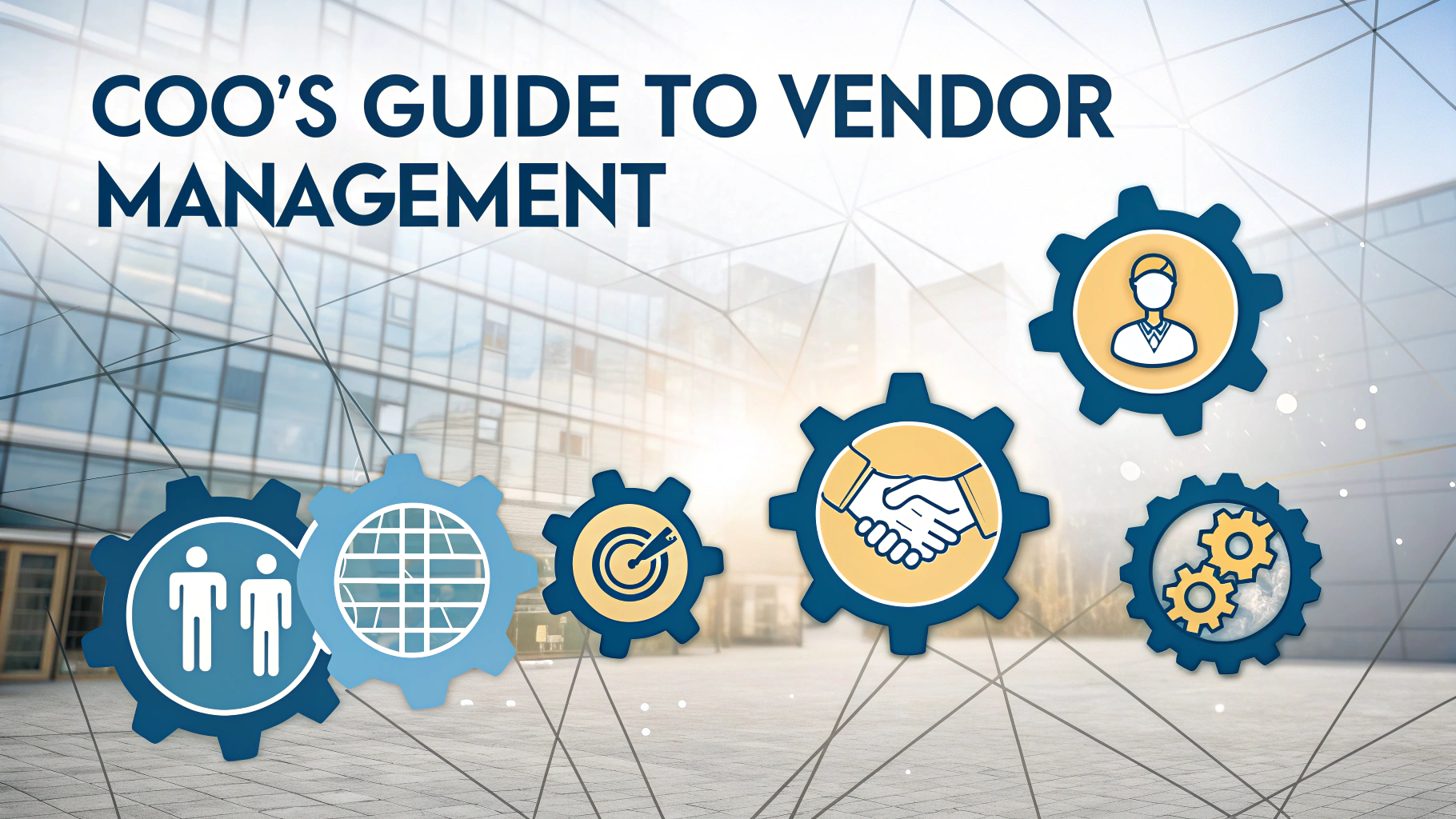Remote leadership requires a distinct set of skills and tools, especially for Chief Operating Officers managing distributed teams across different locations and time zones.
A well-equipped COO needs both technological solutions and interpersonal strategies to maintain operational excellence while leading from afar.
This toolkit outlines the essential resources, methods, and practices that enable COOs to lead effectively in remote environments.
Essential Digital Tools for Remote COOs
- Project Management: Asana, Monday.com, or Jira for workflow tracking
- Communication: Slack for instant messaging, Zoom for video conferencing
- Document Collaboration: Google Workspace or Microsoft 365
- Performance Tracking: 15Five or Lattice for team metrics
Building Remote Team Culture
Remote COOs must actively foster connection through regular virtual team-building activities and informal check-ins.
Virtual Team Building Ideas
- Online coffee breaks (15-minute casual conversations)
- Virtual lunch-and-learn sessions
- Remote team games and trivia
- Digital celebration of achievements
Remote Performance Management
Focus on measuring outcomes rather than monitoring activity.
| Metric Type | What to Measure |
|---|---|
| Output | Project completion rates, quality metrics |
| Engagement | Meeting participation, collaboration levels |
| Development | Skill acquisition, goal achievement |
Communication Protocols
- Async-First: Default to asynchronous communication when possible
- Documentation: Keep detailed records of decisions and discussions
- Response Times: Set clear expectations for message response times
Remote Operations Security
Implement robust security measures for remote operations.
- VPN requirements for all team members
- Two-factor authentication for all tools
- Regular security training sessions
- Clear data handling protocols
Time Zone Management
Create a balanced schedule that works across different time zones.
- Use tools like World Time Buddy for scheduling
- Rotate meeting times to share the burden
- Record important meetings for asynchronous viewing
Remote Team Wellness
- Mental Health Support: Employee assistance programs
- Work-Life Balance: Clear boundaries for work hours
- Equipment: Home office setup allowances
- Regular Breaks: Scheduled screen-free time
Moving Forward with Remote Leadership
Success in remote leadership comes from consistent application of these tools and regular adaptation to team needs.
Connect with other remote COOs through professional networks like LinkedIn (Remote Executives Group) or the Remote Leadership Institute for additional support and resources.
Measuring Remote Leadership Success
Track and evaluate the effectiveness of remote leadership initiatives through key performance indicators.
- Employee satisfaction scores
- Team productivity metrics
- Project completion rates
- Cross-team collaboration levels
Crisis Management in Remote Settings
Develop robust protocols for handling emergencies and unexpected challenges remotely.
Essential Components
- Emergency communication chains
- Backup systems and redundancies
- Remote incident response procedures
- Digital contingency plans
Remote Training and Development
Implement comprehensive virtual learning programs to maintain team growth.
- Digital Learning Platforms: Udemy for Business, LinkedIn Learning
- Virtual Mentorship Programs: Cross-department knowledge sharing
- Skill Assessment Tools: Regular competency evaluations
- Career Development: Virtual career pathing sessions
Empowering Remote Leadership Excellence
Remote leadership success depends on the strategic implementation of digital tools, consistent communication protocols, and a strong focus on team well-being. COOs must continuously evolve their remote leadership approach, embracing new technologies and methodologies while maintaining human connection at the core of their leadership style.
Stay committed to regular assessment and refinement of remote leadership strategies, ensuring that your distributed teams remain engaged, productive, and aligned with organizational goals. Remember that effective remote leadership is an ongoing journey of adaptation and improvement.
FAQs
- What are the essential tools needed for effective remote leadership as a COO?
Communication platforms (Slack, Microsoft Teams), project management software (Asana, Trello), video conferencing tools (Zoom, Google Meet), and cloud-based document sharing systems (Google Workspace, Microsoft 365). - How can a COO maintain team accountability in a remote setting?
Through clear KPIs, regular performance tracking, implementing project management tools, setting measurable goals, and establishing structured check-ins with team members. - What strategies help in maintaining company culture while leading remotely?
Virtual team building activities, regular all-hands meetings, recognition programs, digital water cooler channels, and consistent communication of company values and mission. - How should COOs structure remote team meetings for maximum effectiveness?
Set clear agendas, establish meeting cadence, use visual aids, implement time blocks for focused discussion, and ensure follow-up documentation is shared promptly. - What are the best practices for managing cross-functional teams remotely?
Implement clear communication channels, establish collaboration protocols, use centralized documentation, schedule regular cross-team sync meetings, and utilize async communication methods. - How can COOs ensure effective decision-making in a remote environment?
Create structured decision-making frameworks, use data visualization tools, implement clear approval processes, and maintain transparent communication channels for stakeholder input. - What security measures should COOs implement for remote operations?
VPN access, two-factor authentication, secure cloud storage, regular security training, and clear data protection protocols for remote workers. - How can COOs measure remote team productivity effectively?
Use productivity tracking software, establish output-based metrics, implement regular performance reviews, set clear deliverables, and maintain ongoing feedback loops. - What are the key considerations for remote onboarding processes?
Structured digital onboarding programs, virtual mentorship assignments, clear documentation of processes, scheduled check-ins, and technology setup protocols. - How should COOs handle conflict resolution in remote teams?
Establish clear conflict resolution protocols, use video calls for sensitive discussions, maintain detailed documentation, involve HR when necessary, and focus on proactive communication.







